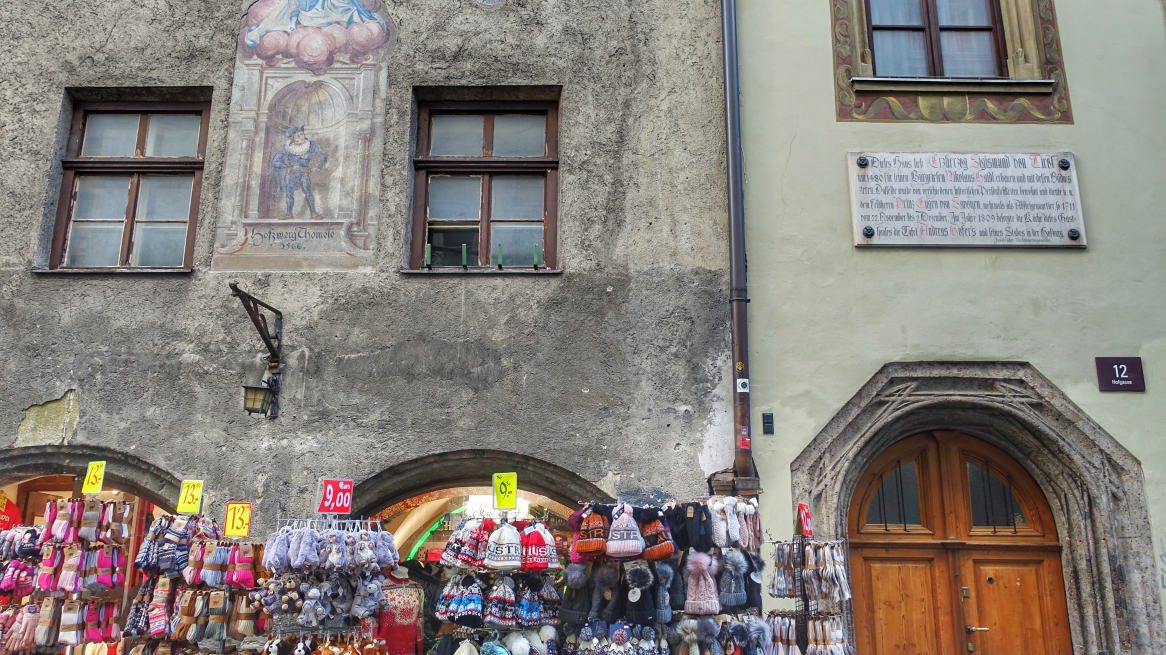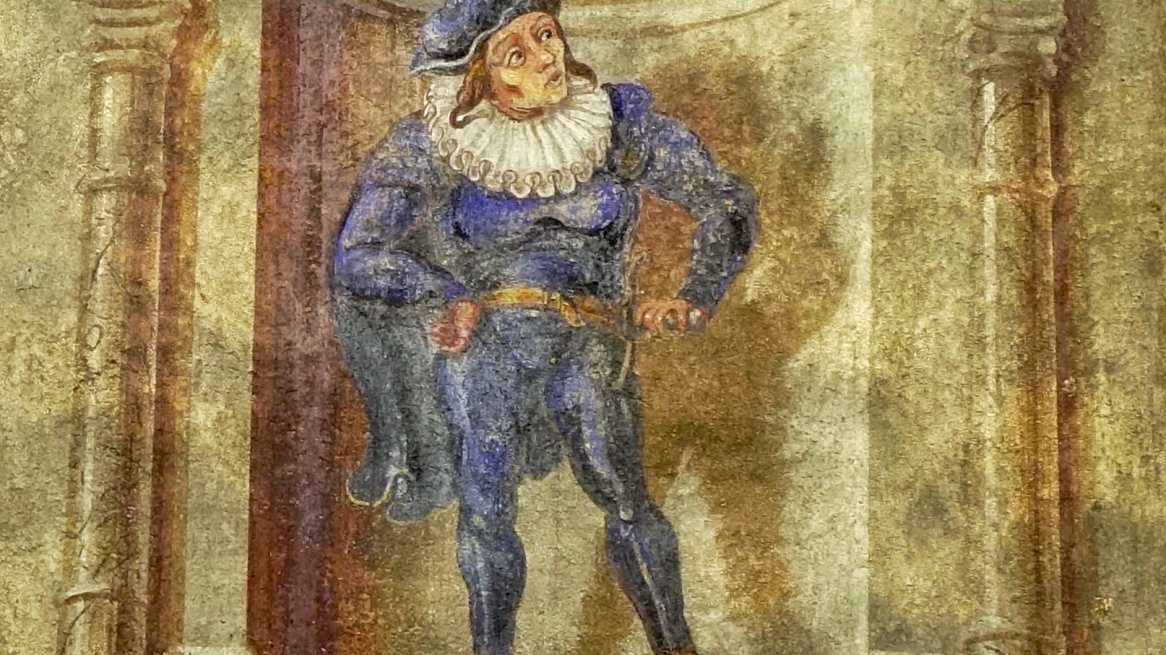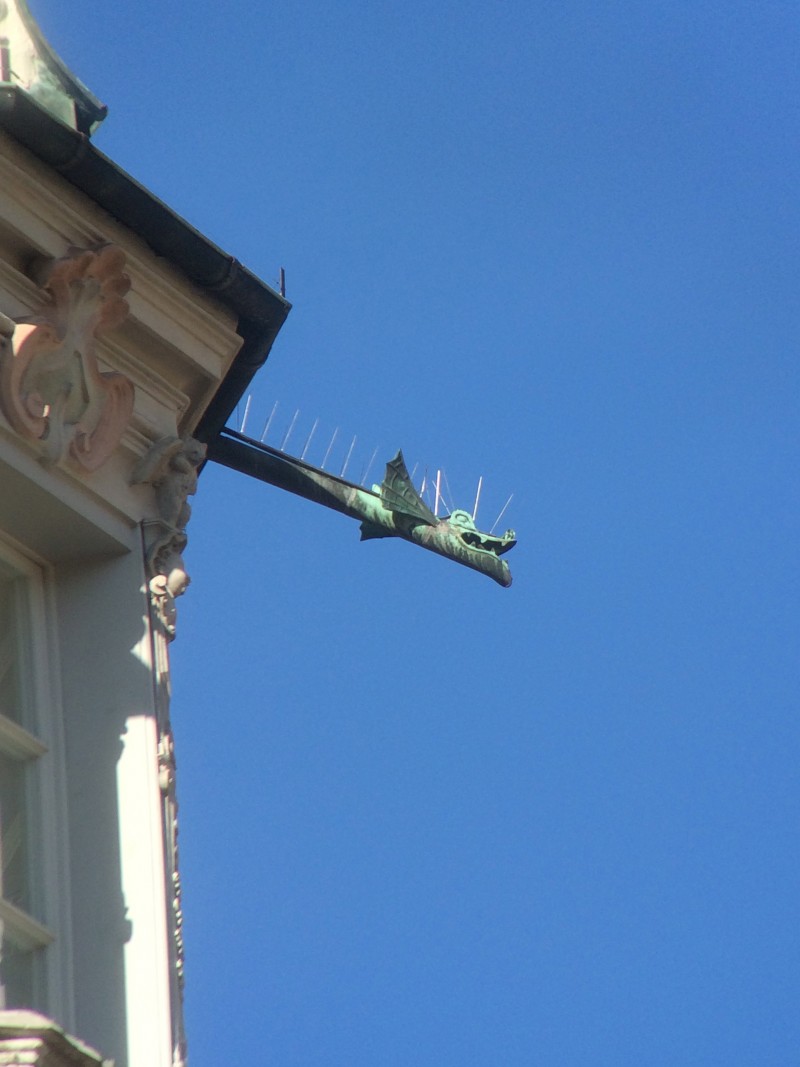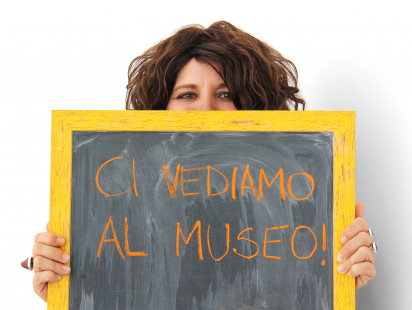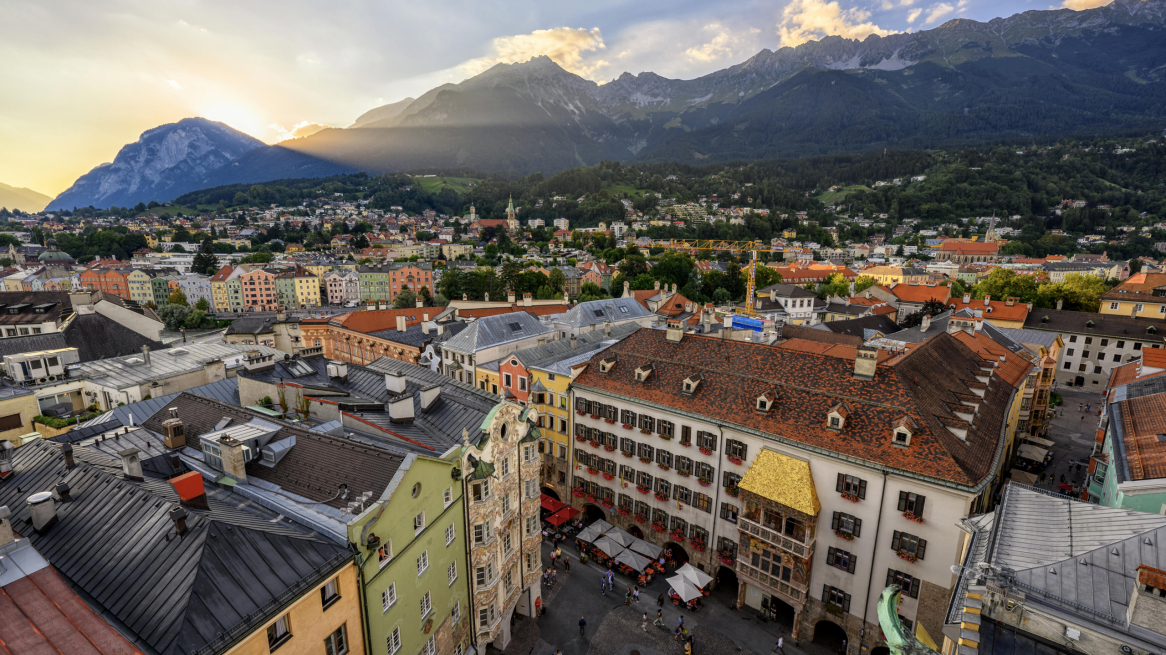
It is truly no wonder that Innsbruck's old town is one of Austria's and even Europe's top travel destinations. The medieval flair, the narrow alleyways and the world's most beautiful oriel are simply unique. If you take a closer look around, you can get a bonus. Because the old town has a lot more to offer.
Its layout has remained more or less the same even more than 850 years after it was founded. Protected by the River Inn to the north of the city, the rest was surrounded by a high city wall and secured by water-filled moats, the city could only be entered through the city gates. Coming from the east (i.e. from the Hofburg), one entered the city center through the Wappentor, from the south through the Spitaltor or Vorstadttor, which was demolished in 1765. The market square was reached through the Pikentor gate and the Inntor gate, demolished in 1790, was passed on the way to the Inn bridge.
View of Innsbruck around the year 1780. Clearly visible: today's Herzog-Friedrich-Straße, the Inntor and the Inn bridge. Image: Innsbruck City Archives, Josef Schönegger
Through the hospital or suburban gate to the Golden Roof
When visitors approached the city from the south, they moved towards the glittering golden oriel. This was a pure demonstration of power and glory, one of the many stagings of Emperor Maximilian, the 'last knight'. Today's 'Herzog-Friedrich-Straße' was the actual 'main street' of Innsbruck and the old town until modern times. Coming from Maria-Theresien-Straße, it turns sharply to the left in front of the Golden Roof in the direction of Ottoburg and Inntor. It was once used by all traffic from the Brenner Pass towards the Inn Bridge and on the left bank of the Inn to the Unterland and Oberland.
View of the Golden Roof through the former suburban gate. Even in the Middle Ages, this view left visitors impressed and in awe. Picture: Kräutler
The historic town square
The square in front of the Golden Roof was once the 'town square' - the old town hall is still located here today - and served Emperor Maximilian as a tournament ground. The emperor enjoyed the performances of the bold knights from his oriel, whose secret inscription has since been deciphered. If you want to get an impression of what the tournaments on the town square must have been like, you can do so virtually on the spot. The corner tower of the Katzunghouse has numerous relief panels that clearly depict the course of tournaments. The emperor may even have been immortalized on one of these panels.
Emperor Maximilian as a spectator (top right) of a tournament scene. Relief on the Katzunghaus. Picture: W. Kräutler
The corner tower at the Katzunghaus with relief panels depicting courtly tournament scenes. Picture: Kräutler
The town square was not only used for jousting and juggling. in 1536, during the dark times of the persecution of the Reformation movement, Jakob Huter was burned at the stake after being brutally tortured. The Catholic Church thus got rid of the leader of the 'Anabaptist movement', which had gained many followers in Tyrol.
A court dwarf that once jumped out of a pie
Anyone entering the city from the east passes the former coat of arms gate, now part of the baroque Hofburg. At the inn Stiftskeller, you can see more than just a last remnant of Innsbruck's massive city wall. A fresco in the parlor takes the interested visitor back to the time when Innsbruck was a royal seat.
Remains of the Innsbruck city wall have been virtually 'preserved' in the monastery cellar. Picture: Kräutler
The first two houses on the left-hand side of Hofgasse are among the most interesting buildings in the old town. The first corner house, the 'little giant house', was once home to the court dwarf Thomele, who is also immortalized on an exterior fresco. He was 65 centimetres tall and had to entertain the court society. If he didn't make people laugh, he was slapped and kicked. His appearance at a wedding was legendary, when he jumped out of a pie to amuse the guests at lunch.
The 'Thomele House' with its fresco of the court dwarf is attached directly to the castle giant's house (right). Its entrance is the famous Innsbruck 'whispering arch'. Picture: Kräutler
Archduke Sigmund of Tyrol had the adjoining house built in 1480 for his castle giant Nikolaus Haidl. His 2.20 meter tall skeleton is kept in the Anatomical Museum at Innsbruck University Hospital. The statue of the giant is missing from its designated place, but is kept on the second floor of the city tower. Incidentally, Prince Eugene of Savoy even stayed in this house. In 1809, the house's kitchen supplied the table of the Tyrolean freedom fighter Andreas Hofer, who ruled from the Hofburg with his entourage.
And there is something else that makes this 'giant house' famous: the so-called 'whispering arch'. The entrance to the souvenir store is a Renaissance archway in which two curved channels are located. Messages can be sent through them in a whisper and actually arrive on the opposite side. Quasi 'silent mail' via an archway, ideal for making marriage proposals.
Ceiling frescoes in Innsbruck's arcades
Even locals are sometimes amazed when they are approached about two ceiling frescoes in Innsbruck's arcades. You may have walked under them a hundred times without noticing them. The fresco at Helblingprobably dates from the late Gothic period, but has not progressed beyond the sketch stage. The design sketch is clearly visible, with garlands of plants, the sun and moon and an eagle.
The second fresco is a so-called 'quaternion eagle', which leads an almost inconspicuous existence in the arcades of the building at Herzog-Friedrich-Straße 35 in front of the McDonald's entrance. The fresco was created around 1495 and shows the imperial double-headed eagle. The feathers are decorated with the coat of arms of the Roman-German Empire.
The depiction of the coat of arms of the Roman-German Empire on the wings of a double-headed eagle is called a 'quaterion eagle'. A beautiful example of this can be admired in the arcades of the old town. Picture: Kräutler
Two famous family names as street names
Innsbruck's old town has two streets that can be traced back to personalities. The first is ‚Riesengasse’, whose name is derived from the family name 'Rieß'. The respected merchant family lived here when the street was still called 'Judengasse'. Sigmund Ris, a member of this family, acted as court chaplain and confessor to Emperor Maximilian. He once stayed at the 'Rieß-Schlössl' in Flaurling.
Kiebachgasse, at the upper end of which the Café Munding 'ordinates' and whose façade is adorned with a grenade from the Wars of Independence, was long known as 'Ballgasse'. Merchants stored their goods (bales) here. The current name Kiebachgasse goes back to the master locksmith Josef Kiebach, who left his entire fortune to the city's poor relief fund after his death in 1875. At the time, it amounted to 75,000 guilders, or around one million euros in today's money. And honor to whom honor is due.
Ropes have not always been woven in Seilergasse. In Maximilian's time, it was still Fleischergasse. Times have changed.
In the recent past, this little lane has fallen into disrepute. The reason: the Piccolo Bar was located here, a meeting place for light girls and night owls. The wonderful website 'Innsbruck erinnert sich' (Innsbruck remembers) describes in detail what went on here - sometimes loudly. But also how the police liked to investigate the bar in detail and kept detailed logs.
The 'Vier-Viecher-Eck' - a kind of medieval traffic circle
Anyone hurrying out of Seiler- or Kiebachgasse towards the market square will suddenly come across a kind of crossroads in the middle of the old town. Once known as the 'Vier-Viecher-Eck'. Four inns form a kind of 'gastronomic menagerie' here: Goldener Löwe, Goldener Hirsch, Roter Adler and Weißes Rössl. They all have one thing in common: even in the Middle Ages, they waited for carters, guests and drinkers who came thirsty.
And where is the cathedral?
The fact that St. Jacob's Cathedral stands apart is due to a special type of urban planning. Innsbruck is built in the style of the Inn-Salzach towns, which separate the market square from the church. Jesus famously chased the merchants out of the temple. This type of town was designed to avoid this. Pfarrgasse leads to the cathedral, which houses one of the most famous paintings by the Gothic master
Lucas Cranach the Elder: the painting 'Mariahilf'. In the early modern era, hundreds of thousands of people made pilgrimages to Innsbruck to pray before the 'picture of grace' and ask for relief from pain and anguish. It was so famous that it still adorns hundreds of house walls in Tyrol today as a replica. I have counted more than 30 replicas in Innsbruck's old town alone.
The cathedral, or more precisely its south tower, was used for a less religious purpose as 'Koordinatenursprung der K.K. Katastralvermessung für Tirol und Vorarlberg, 1855-1861' as part of the creation of the Franziszeischen cadastre. At that time, almost 50 million land parcels were recorded on 160,000 folder sheets. The cadastre still forms the basis of the Austrian land register today. More information can be found on the website of the city archive.
It is no wonder that Innsbruck's old town is considered 'romantic'. The wonderful town houses with the rococo-decorated Helblinghouse, the city tower and of course the Golden Roof transport visitors to an environment that existed here more than 500 years ago. Seeing dragons hovering at lofty heights is reminiscent of a fairy tale.
Rate this article
Show me the location on the map
A volunteer at the "Schule der Alm" alpine farming school, cultural pilgrim, Tyrol aficionado and Innsbruck fan.
Similar articles
Innsbruck is really good at beauty! But where a building site is currently disrupting the…
Innsbruck is a popular tourist destination. The big attraction remains the mountains, but the city has a…
Not just looking at art, but getting to know it better on a guided tour, talking about…
The 'Path of the Senses' from Rietz via Stams to Mötz-Locherboden is an exploration in the…








